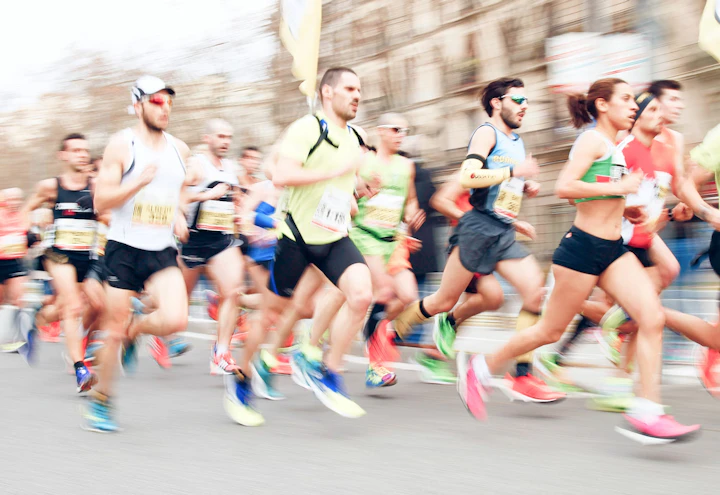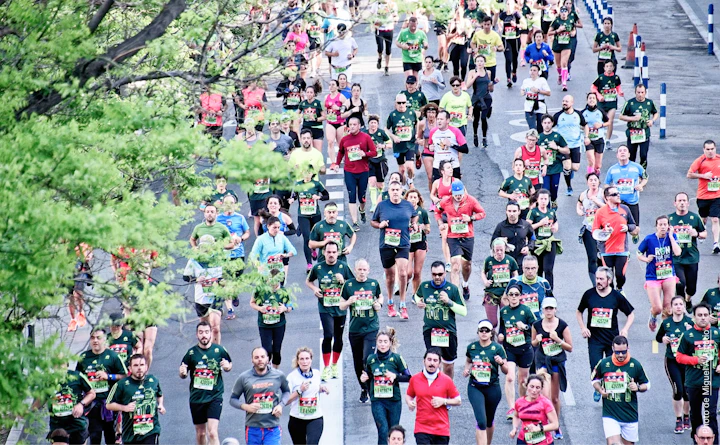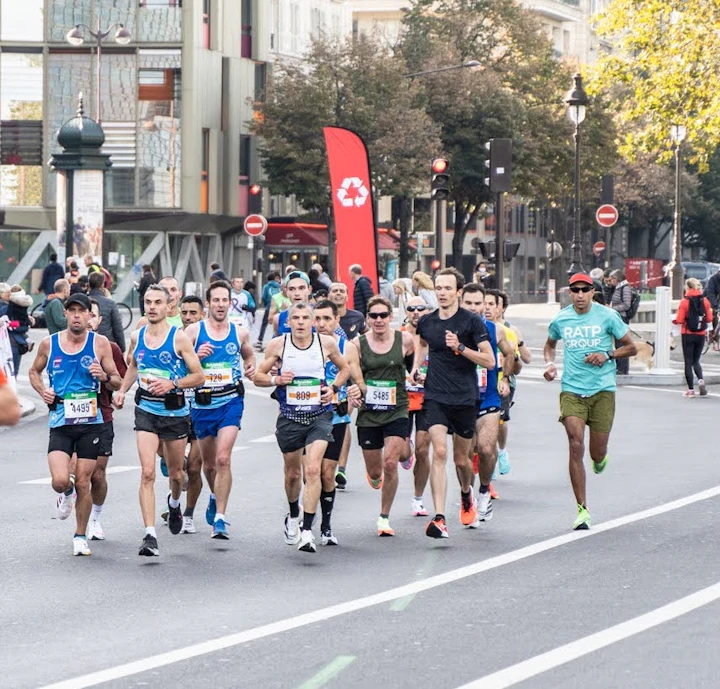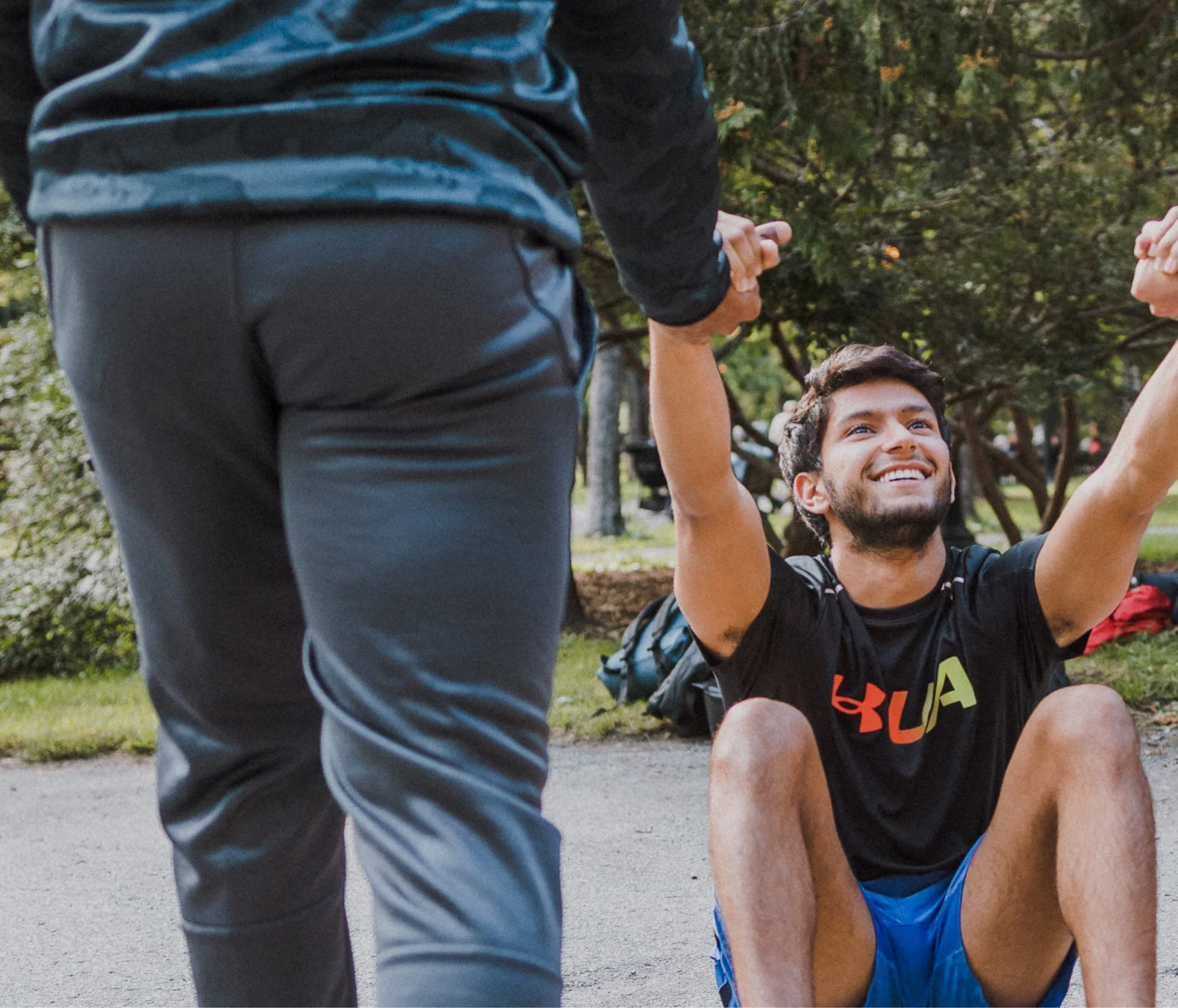What is the average speed of women in running?

10 min read
Summary
Our method to calculate women’s average speed in running
What is an average speed?
What is a median speed?
How did we calculate the average speed of women?
What is the average pace of women in running?
Women's average speed in jogging
Women's average speed in racing
How to calculate your speed in km/h or min/km?
Now that we know this, what do we do with the information?
What is the speed of a good runner?
But what factors can influence a runner’s average speed?
How do you determine the right average running speed?
Base endurance, pace, or "jogging speed"
The speed with intense effort: your marathon pace
The 10 km or 5 km pace to work on your maximal speed

Receive advice from our passionate coaches!
"Am I running correctly? Am I running fast enough? Am I better or worse than the other runners?"
All these questions are quite natural when you practice regularly or start to run. When you get interested in the “speed” component of this sport, you inevitably want to compare yourself or at least position yourself in relation to other practitioners. If mileage serves to measure the amount of effort exerted, pace allows measuring the speed at which those kilometers were covered, and indirectly the intensity of the effort. Even if running is practiced for leisure without competition, knowing where you stand compared to others of the same gender is interesting and can be reassuring.
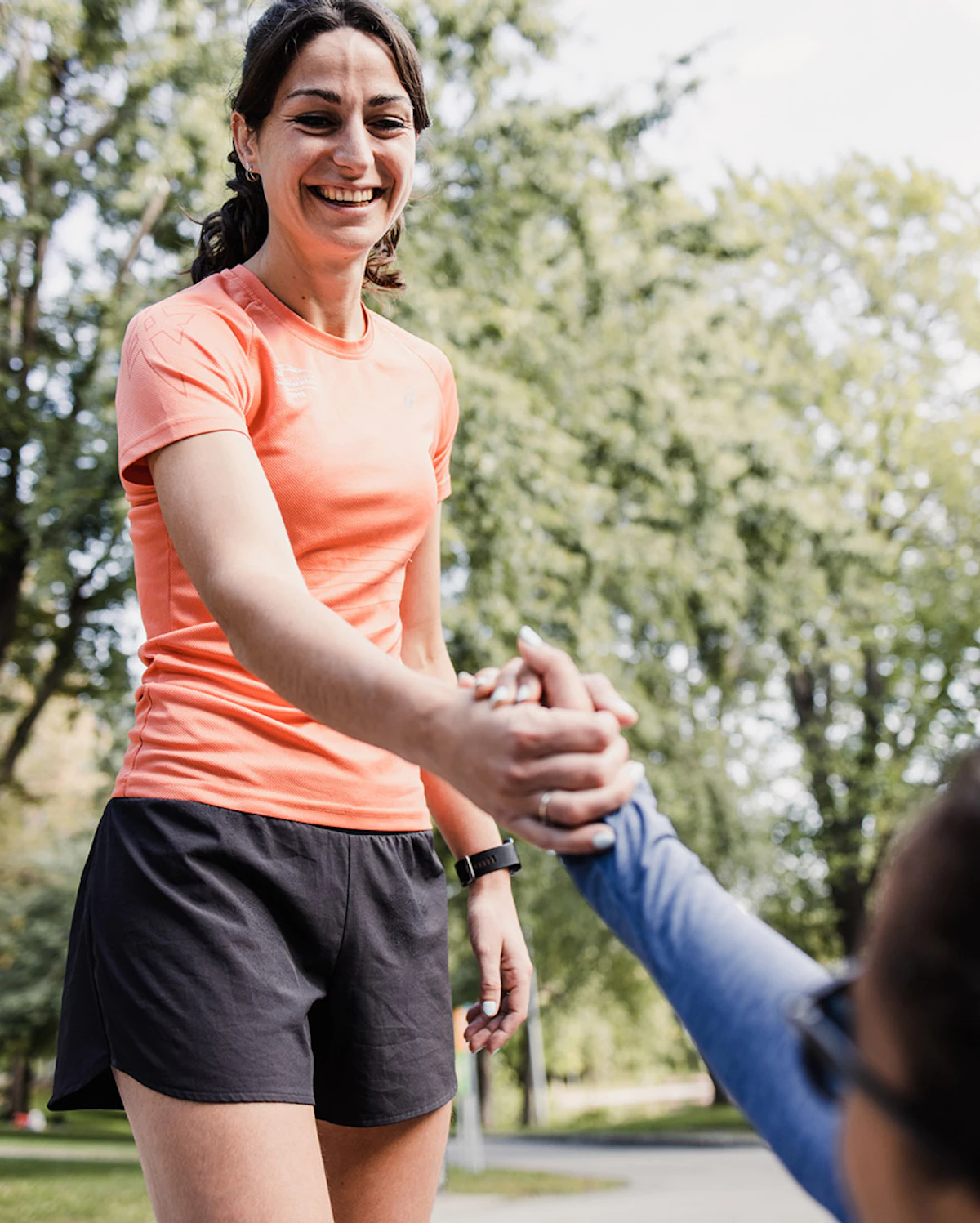
Our method to calculate women’s average speed in running
What is an average speed?
Initially, let's define average speed and average pace. Speed is expressed in kilometers per hour (km/h), while pace is expressed in minutes per kilometer (min/km). Thinking in terms of pace allows for a higher level of precision.
One could define a person's average pace or speed as the average of the paces at which this person runs. The average running speed of women would simply be the average speeds of each woman. However, this method of calculation neglects the fact that each runner uses a wide range of paces. It is challenging to discuss average speed when workout types vary and some are at a fast pace, others very fast, some slow, or very slow, etc.
An average pace across all year's outings is thus not very representative of a person's level.
What is a median speed?
It’s the value that exactly divides the group of studied runners in two: 50% of women run above this speed, and 50% run below this speed.
In this article, we detailed the average and median paces of women in jogging (representing most running workouts), as well as in 10km, half-marathon, and marathon races.
How did we calculate the average speed of women?
To give you an idea of your level compared to women, we studied the training data of 38,620 women running with Campus. Keep in mind that when comparing this data to your own, these are only averages and do not represent the variability that exists in real life 🙂.
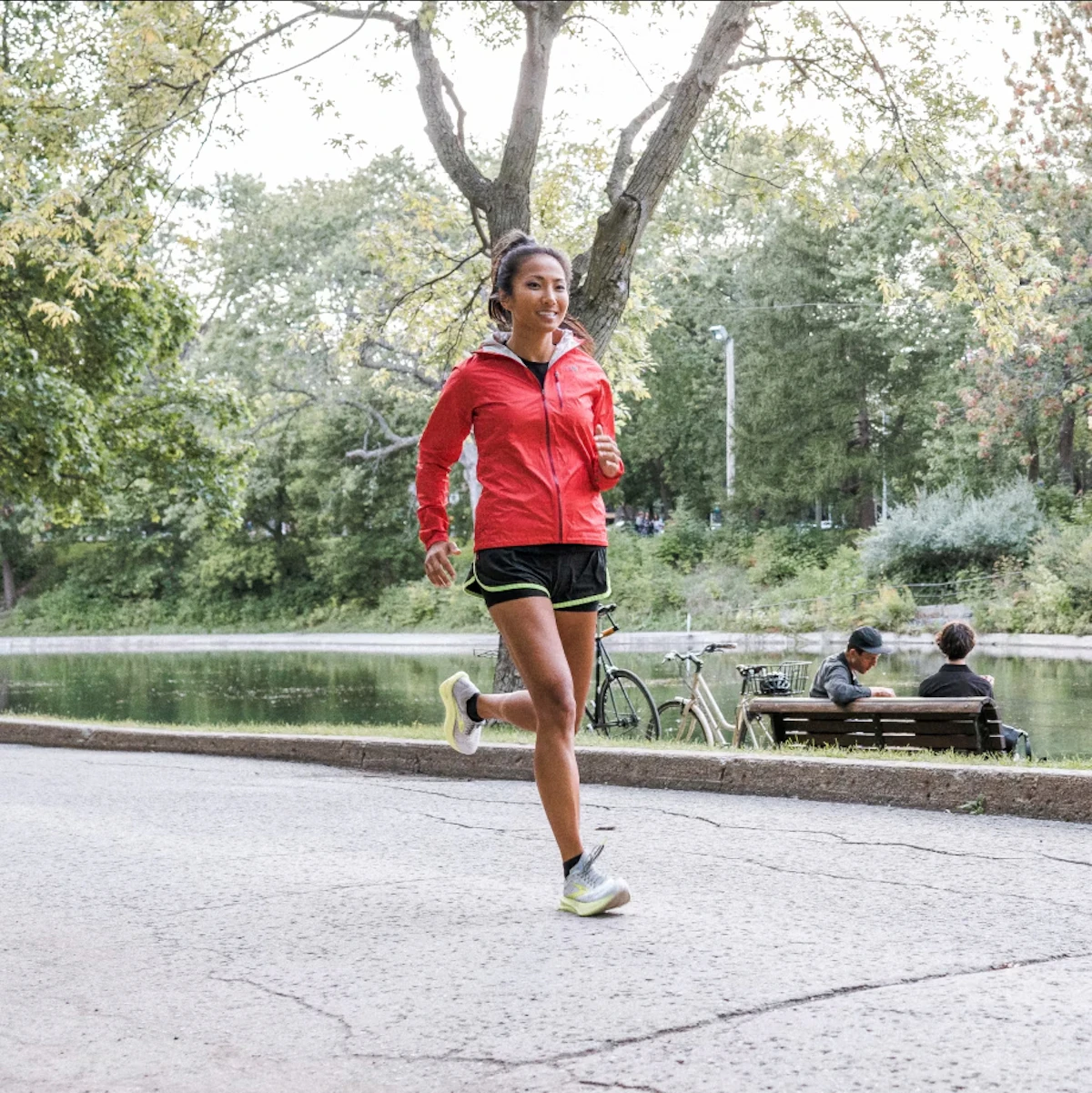
What is the average pace of women in running?
Women's average speed in jogging
In jogging, women generally run at an average pace of 7:49 min/km, roughly equivalent to 7.7 km/h. The median is at 8:27 min/km.
Women's average speed in racing
In a 10km race, women run at an average of 6:42 min/km, a total time of 1h07, and a speed of 9 km/h. The median is at 6:59 min/km for a time of about 1h08.
In a half-marathon, women run at an average pace of 7:00 min/km, equating to 2h27 of running, for an average speed of 8.6 km/h. The median, dividing the women group, is at 7:18 min/km with a time of about 2h33 for the half-marathon.
Women take on average 5h47 to complete a marathon, corresponding to a pace of 8:10 min/km, and an average speed of 7.3 km/h. 8:39 min/km is the median for women on marathon, corresponding to a total time of 6h05.
How to calculate your speed in km/h or min/km?
As previously mentioned, calculating in km/h or mm/km does not represent exactly the same concept. For a more accurate analysis of your workout, we recommend using pace, thus in mm/km.
To find out your average speed (km/h), simply divide your distance traveled by the time it took, for example:
If you cover 10km in 1h15, your average speed is 8km/h.
And to know your average pace (mm/km), divide the time by the distance covered, so here:
Your average pace is 7 minutes 30 seconds per kilometer, so a pace of 7:30/km.
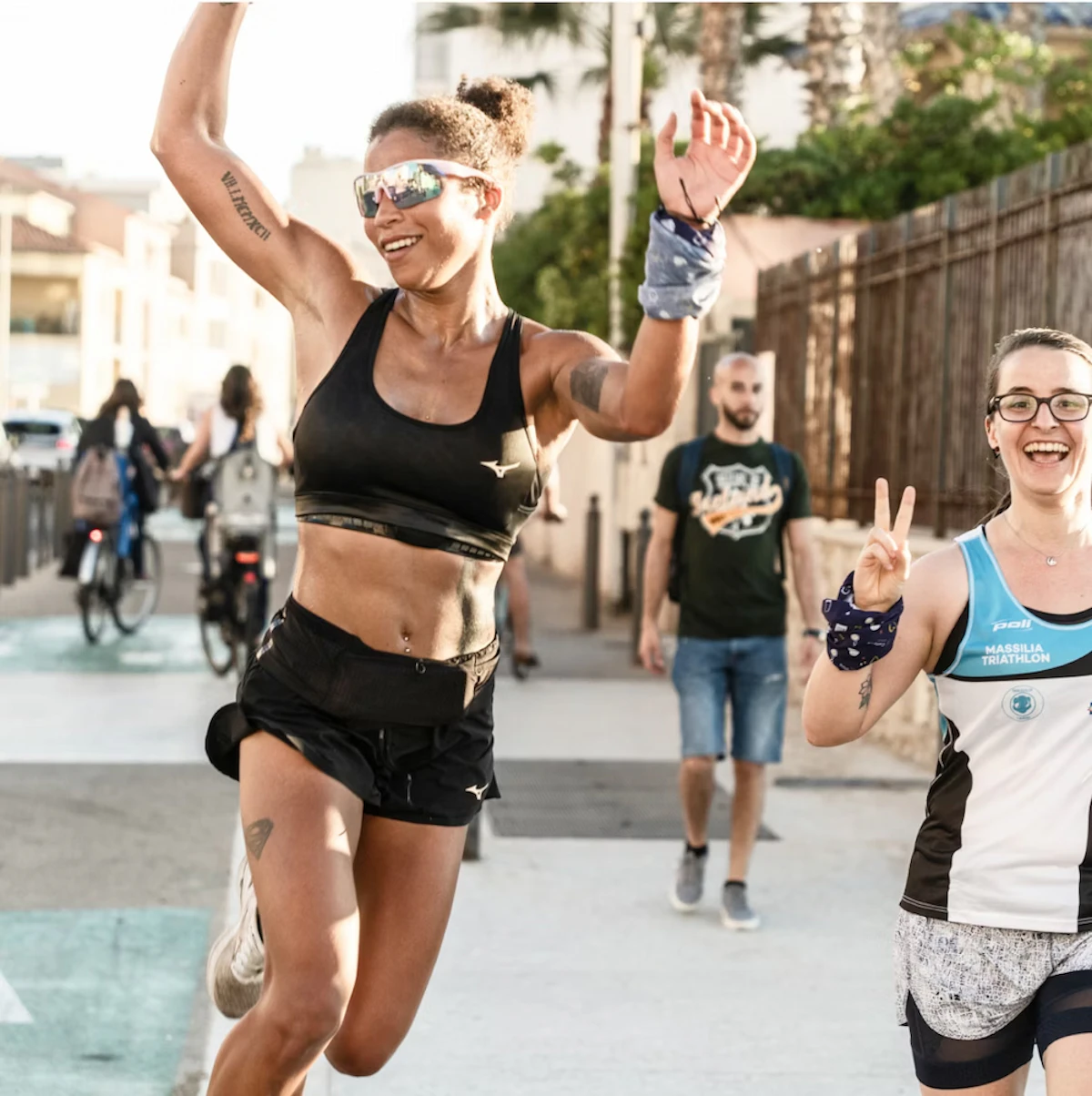
Now that we know this, what do we do with the information?
What is the speed of a good runner?
Regardless of where you place yourself against those averages, remember that running is primarily an individual sport and every runner's main goal should be to enjoy and improve. In running, we generally seek to improve over time, to become better, more enduring, faster. For amateurs, the quest is often personal and intimate. We aim to become a little better each day, rather than better than our neighbor.
But what factors can influence a runner’s average speed?
The factors influencing our running speed are numerous, including age, sex, and merely the intensity of training.
One of the factors is age, which affects performance as over the years, we lose muscle mass and our aerobic capacity tends to decline. On average, we lose 3 to 8% of muscle mass per decade.
Sex (female or male) also impacts running speed as results highlight a notable difference between sexes. The reason stems from a higher lean body mass difference in men, contrasted by a lower body fat mass.
There's also a hormonal factor, with males tending to produce hormones that enhance muscle recovery. This factor impacts muscle strength. These combined factors explain why the average speed of men is higher than women's.
Good to know: Nutrition also plays a significant role in evolving your pace throughout training. When well-tailored, it can maximize your performance!
Finally, one of the last factors is the level of effort during a running workout. For example, if you rarely work on your running speed by always maintaining a comfortable breathing pace similar to jogging, you will tend not to improve your average speed.
To boost your average pace, the body needs to train various specifics like MAS, muscle strength, and endurance. Depending on the intensity level of your outing, your running speed will evolve over the long term. The most important aspect is to perform diversified and progressive workouts.
This is the philosophy we try to impart to our runners on Campus, through individualized and unique training plans, ensuring everyone has genuinely fitting training for their level, needs, and goals. Come and discover more about what we offer!
How do you determine the right average running speed?
Beware, we’ll give you an elusive answer... There are several good average speeds! It's the one you can maintain according to the workout, distance, or competition. Again, we will rather talk about pace.
Base endurance, pace, or "jogging speed"
Your recovery pace corresponds to 60% of your Maximal Aerobic Speed (MAS) or 70% of your Maximum Heart Rate (MHR). The goal is to perform a workout or a warm-up at a moderate intensity where you can talk even with slightly intense breathing.
The speed with intense effort: your marathon pace
At this pace, conversation is challenging, if not impossible. The intensity of this "speed corresponds to 75% - 85% of your MAS or 80% - 90% of your MHR. When preparing for a marathon or half-marathon, you aim for this effort intensity during the race.
The 10 km or 5 km pace to work on your maximal speed
During workouts at these paces, the intensity level is at its peak. To orient yourself, this speed corresponds to 85% or more of your MAS or 90% or more of your MHR. Here, the ability to speak is nearly impossible, even advised against; instead, focus on your pace for an explosive workout!
To delve deeper into the different pace thresholds, I invite you to check out the Running Addict article, which explains through a correspondence table the different paces.
If you want to know the times you could achieve in races like 5km, 10km, half-marathon, or even the marathon, we invite you to use our pace calculator: easy to use and free!


